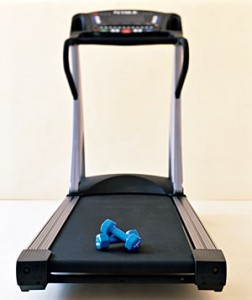31 Days to a Better Body Body: Day 3 – Lift Heavy Stuff
Strength. Train.
It will change your body and your mind unlike anything else.
I’m guessing most of of my readers already know all this but just in case you’re new here.
(source)
Benefits of Strength Training
1. Helps manage stress. Nothing calms my nerves like a good lifting session.
2. Improves self-esteem. I love the way strength training has changed my body, but even more so, I LOVE feeling strong. Strength training has taught me to love and appreciate my body in a way I never knew possible.
3. You can do more. The stronger you are the more opportunities there are for greater adventure and fun. Farther hikes to more beautiful views? Keeping up with the kids?
4. Reduces the likelihood of injuries. Not only do your muscles get stronger but so do your ligaments, tendons, and bones. The older we get the more prone we are to injury but the stronger we are the less likely we are to get injured. (That sentence was awkward but you you what I mean.)
5. By increasing your muscle mass you’ll increase your resting metabolism which means you’ll burn more calories when you are sitting in front of the computer reading blogs. 😉 More muscles typically means less fat.
6. Unlike cardio, strength training can help you to sculpt your body. “Pear shaped”? You can build up the shoulders and back to give the appearance of narrower hips. Want of little more “junk in the trunk”? You can squat and deadlift your way to some curves. For the most part, cardio will only give you a smaller version of your untrained shape but with weight training you can literally sculpt your body. Of course, it takes time and there are limits. We have to work with our natural body types but it’s really quite amazing what can be done.
7. Reduces likelihood of heart disease, strokes, diabetes, hypertension, obesity, osteoporosis, cancer, and depression. Nuff’ said.
(Source)
Strength Training for Beginners
If you are brand new to weight training here are few basics guidelines set forth by the Amercian College of Sports Medicine.
1. Always warm up first and don’t forget to cool down. Save stretching until you are finished with your workout.
2. Always use good form. Go through the complete range of motion and use control.
3. Train your large muscle groups first. You want to stimulate all your major muscle groups and connective tissues.
4. Do compound (multi-joint) movements before isolations (single joint). An example would be to do squats before hamstring curls or pull ups before bicep curls. Big movements first. (Personally, I rarely bother with isolations anymore but they do have their place and can be less intimating for newbies.)
5. Perform the more intense exercises before the less intense exercises.
6. You want to challenge your muscles. Strength training should be uncomfortable but no need to scream at the ceiling. If you are doing 10 reps, reps 9 and 10 should be difficult. If you can easily pump out 11-12 and the goal was 10 then go heavier. If you want to cry at rep 5 and the goal was 10 then it’s too heavy assuming you’re not a big baby. Kidding. 😉
7. Progress gradually. (Do yourself a favor and keep a journal so you can see your progress. It’s very rewarding and motivating.)
8. Alternate upper and lower body exercises or alternate push/pull exercises. Push exercise examples: push ups, squats, military press, bench press. Pull exercise examples: deadlifts, rows, pull ups. These can be alternating within a sessions or by days.
9. Strength train 2-3 days per week and give your body at least 48 hours of rest between each session for muscles of the same group. For example, don’t train lower body 2 days in a row.
10. A safe place to start for newbies is 2-3 sets with 8-12 repetitions per set resting 1-3 minutes in between sets. For older adults, a higher rep range of 10-15 may be more suitable.
11. This isn’t an ACSM recommendation but I think it’s important. Unless you are injured or frail then start out with free weights and avoid the machines. Most of us sit enough as it is. Let your muscles do what they are meant to do which is working together as a whole supporting and stabilizing that amazing body of yours.
There are so many ways to design a program but they all have one goal in mind to challenge the muscles so they get stronger. As a newbie, your focus should be just as much (if not more) about building consistency as it is muscle. The strength will come with consistency. If you can afford it, find a trainer who can can get you started with proper form and offer you the encouragement you need to make this a part of your lifestyle. If a trainer is not an option then do it on your own and, most importantly, have some fun. Yes, believe it or not, strength training can even be fun.
Do you strength train? Do you like it? How did you start? Any other advice for newbies?
Hugs and High Fives,
Jenn
Check out our family’s adventures at New School Nomads as we plan to take a year long road trip through the United States!
If you enjoyed this post you can follow one of three ways! 1. Subscribe to the RSS Feed 2. “like” on Facebook, or 3. Sign up to have posts emailed to your inbox. Simple dimple!
Pin It






 This is my (almost) sane quest for insane health. Let's
This is my (almost) sane quest for insane health. Let's 

Love strength training almost as much as plyo. Yes, it totally changed my body and quite frankly I think it changed the amount that I can eat to maintain.
Yes, it totally changed my body and quite frankly I think it changed the amount that I can eat to maintain.
You make a really good point! I think that is true for a lot of people. And thanks for dropping by. It was sort of quiet around here.
I guess carrying around the extra 75 pounds doesn’t count as “lifting heavy stuff.” 😉
Yes, I do lift heavy stuff. And it really did change my body. right now I would love to hike every day however if I could…